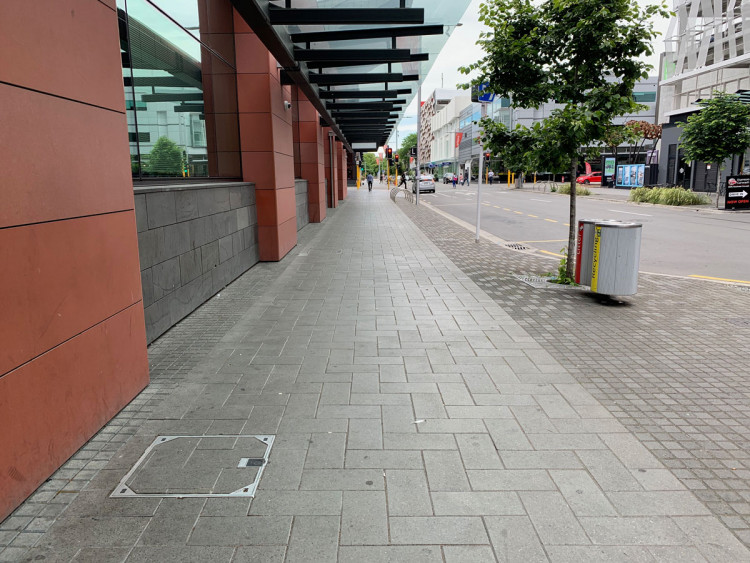Whenever possible, covers and grates should be sited within the street furniture zone.[1] If this is not possible, they can be placed at the edge of the footpath through zone.
To minimise pedestrian hazards, grate openings should be less than 13mm wide and 150mm long to prevent small wheels, walking sticks, canes and shoe heels from becoming trapped.[2] Any elongated openings should be placed perpendicular to the main direction of pedestrian movement.
Covers should have a rough surface texture, but without regular, large protrusions that could result in their being mistaken for a tactile surface. However, they can incorporate attractive designs that can lead to a more interesting streetscape. They should always be flush with the surrounding surface and be slip resistant, even when wet.
Inset covers may be used for high quality paving or tactiles where moving services is infeasible.[3]

Inset service cover with uninterrupted paving, Christchurch. (Photo: John Lieswyn)
[1] Austroads (2017). Guide to Road Design Part 6A: Paths for Walking and Cycling, Section 5.9
[2] Main Roads Western Australia. (2016). Planning and Designing for Pedestrians: Guidelines
[3] Section 6.4.2.7 service covers in Auckland Transport Code of Practice Section 6 Street Amenities(external link)